Mazda CX-9 Technology Makes You a Better Driver
Filed under: Weekly test drives, Autos
By John Gilbert
If you were going to vote on the international auto company that ranks the highest in design, engineering, and advanced technology, top candidates might be BMW, Mercedes, Audi, Volvo, Honda (via Acura), Toyota (via Lexus), Nissan (via Infiniti), Hyundai…and how about Mazda?
In sheer size, Mazda is a small company, based in Hiroshima, Japan, from where it has continually confounded larger manufacturers with engineering breakthrough technology, such as the rotary engine, and SkyActiv engine-transmission-platform design to create performance beyond what is expected. All its vehicles are fun to drive — which the company has captured with the catch-phrase “Zoom-zoom” — with handling excellence that rises upward from the iconic Miata sports car. Being small has allowed Mazda to keep up with larger companies and also branch out in surprising and impressive ways.
With beautifully designed sedans and small SUVs making a slick portfolio for 2019, Mazda also has created and refined its largest mainstream family vehicle, the CX-9. Mazda switched over to alpha-numeric designations a few years ago, and now has the compact crossover CX-3, the constant comparison-winning midsize CX-5, and the often overlooked CX-9.
But as the design and technology rose, it seemed to catch up to the roominess of the CX-9, and instead of being overlooked by a lot of comparison shoppers, it now is considered by some the best total package among a field of more acclaimed — and more expensive — competitors.
The lines of the CX-9 are indisputably attractive, looking both forceful and classy at the same time, from the large grille opening and on rearward in a continuing harmonious flow. Inside, the CX-9 answers all the questions that might be asked by those who feel they need a three-row SUV to carry their usual load of family and friends and carpools.
The CX-9’s surprising interior room means there is storage room behind the third row, and folding it down makes a flat surface to carry more stuff than people, when the need arises. With more room comes the requirement of more power, and Mazda solved that issue by finding a new way to boost the amazingly efficient SkyActiv 4-cylinder engines that do such an excellent job of power and fuel economy in Mazda’s cars and smaller SUVs. The answer is turbocharging.
Mazda has the 2.0 and 2.5 engines, and taking the 2.5 and adding the turbocharger transforms the CX-9 to 250 horsepower and 310 foot-pounds of torque. That’s enough to make a front-wheel-drive CX-9 run like a sporty sedan, and it can make the all-wheel-drive version potent enough to bet compared to the larger V6es of competitors.
Turbocharging the 2.5 also arms Mazda with higher level competitors in other vehicles, such as the Mazda6 sedan, which gets to use the same powertrain.
But back to the interior of the CX-9, the test vehicle that came in gleaming Snowflake White Pearl, with a reddish leather interior identified as Auburn that makes an inviting environment for driver and passenger alike. The straightforward instrumentation and attention to detail of the dashboard, console and instrumentation is another attraction. It’s always impressive to start with a plush seating arrangement, front and rear, and the second row has now added video screens on the rear of the front buckets to keep second-row passengers — mainly kids — entertained on trips.
But here is an easily overlooked feature of the CX-9. With virtually any three-row SUVs, it helps if you’re a gymnast if you want to get into that third row. Open the back door, fold the seat down, and then try to fit gingerly into that tight V-shaped opening. Once in, you may or may not find comfort. With the CX-9, however, notice the wider-than-expected rear door. Open it, and you have a lot more room to maneuver, and when you fold the seat forward, you can tip it far enough that it is comparatively easy to hop into the third row area. Imagine, seating for six or seven where everybody is comfortable.
Even loaded with people and luggage, the CX-9 never forgets its Zoom-zoom. Handling is crisp and precise, with tight steering feel and a stability that belies such a large vehicle. Part of that is Mazda engineering, which is responsible for the new and brilliantly devised G-vectoring that has been engineered into all Mazda vehicles. It is a trick to not necessarily fool the driver, but to encourage the driver to make the best and most precise moves in cornering.
As a driver makes a tight turn, he is pretty well guessing at the proper “line” to take for both turn-in, and trajectory. After years of zooming, Mazda engineers devised a unique system that seems counter to common sense, but — trust me on this — it works better than you can imagine. You might be fooled into thinking that you are just that good a driver, but Mazda’s G-vectoring makes you a better driver. Logic might make you think you should give more power to the outside wheels, the way Audi did in its first and enduring quatro all-wheel-drive system. But Mazda’s system actually decreases the power to the front outside wheel in a tight turn, while it also softens the damping to that same wheel — only for a millisecond, but at the precise moment you’re starting to turn-in for the corner.
The result is to convince you that you chose the right moment to turn in, and while you make the turn at the moment you and the vehicle agree is optimum, you will soon realize that the car corners so well you never seem to need to correct. My often-relayed theory is that many accidents are caused by a driver making a turn with a lack of precision, and having to correct, he or she perhaps over-corrects. With the G-vectoring, you make the turn and don’t correct because you are headed exactly where you want to go. When there’s no correction, there’s no over-correction. While you’re feeling proud of what a great driver you’ve become in the Mazda, you, your vehicle and all your passengers are simply safer.
With the house-built 6-speed automatic in Sport mode, you get the full power and torque, and you also get all-wheel steering, which further adds to the precision of going around a curve or corner.
The CX-9 also has the full complement of the latest driver aids, even though we’ve been focusing on things beyond the norm. The heated and ventilated front buckets and full sunroof, rain-sensing wipers, roof rails, power rear liftgate and windshield wiper de-icers are nice. So is that genuine aluminum interior trim, and the second row window sunshades, and tire pressure monitoring system.
For safe performance, the CX-9 also has dynamic stability control, traction control, front and rear parking sensors, LED headlights and foglights, automatic high beam control, radar cruise control with blind spot monitoring, rear cross traffic alert, 360-degree surround monitoring on the nav screen, lane departure warning, lane keep assist, with smart brake support and smart city brake support.
That’s pretty much all the goodies you can order on any top-line luxury SUV, like the Acura RDX, several top Lexus models, or those from the German manufacturers or top U.S. candidates. But this Mazda CX-9 adds its unique performance and creature features, and comes in at $45,365. Adding the rear entertainment system and the white pearl mica paint and other options boosts it to $49,230.
True, there are other SUVs in that price range, but not with the combination of all those features. The CX-9 also will deliver 26 miles per gallon highway, while holding the road with precision that takes some getting used to. And that is without even considering how it goes around corners so precisely that it convinces you you’re a better driver than you might be in another vehicle.
Optima Style and Flair Counter Industry Slump
Filed under: Weekly test drives, Autos
By John Gilbert
One of the more intriguing things about the contemporary auto business is the styling duel going on between South Korean partners Kia and its parent company, Hyundai.
It started in 2011, a few years after Hyundai agreed to take Kia under its expansive corporate wing, and it was the watershed year when Hyundai came out with a new Sonata that had a new frame, a new and contoured body, new suspension, and was powered by new engine technology, with new, house-built 6-speed stick and automatic transmissions. Shortly after the Sonata’s introduction, Kia brought out its sister ship, a new Optima.
Without the Sonata’s contours in the body, the Optima was sleeker and to some, more stylish. I thought it resembled the luxury Jaguar sedans more than the closely related Sonata. With Kia able to share Hyundai technology, the two companies also built parallel smaller sedans and SUVs, as well.
Time has evolved since 2011, and the Optima and Sonata continue to be the most recognizable vehicles for comparison. The corporation had hired Peter Schreyer away from Audi to design the Kia models, and he was so successful some Hyundai executives thought they should share his design expertise, so Schreyer was given the chore of being chief designer of both brands. A wise choice was that he was charged with making the similar models distinctly different, while still sharing drivetrains and platforms.
Jump ahead a couple styling generations and the 2019 Sonata is a very nice, refined sedan, which seems to have found a sweet spot after it was first smoothed out and then contoured again when sales slipped. The 2019 Optima — which I recently test-drove for a week — is a perfect example of how effective the two companies’ strategy has worked out, with its smoother and sleeker lines refined into a unique appearance.
Hyundai has jumped ahead with advance displays of its 2020 Sonata, which takes on an entirely new and bold appearance that could be a definite jump into a new generation. Meanwhile, the 2019 models of both cars are selling well right now. With the auto industry suffering a downturn in recent months, sales of the 2019 Sonata was up slightly, but the Optima has risen 10 percent for the first quarter of 2019, amid negative figures from almost all non-truck rivals.
One thing Kia shares happily with Hyundai is a now-traditional ability over-achieve, building cars and SUVs that seem to be worth more than their selling prices — a particular asset in this era of over-priced vehicles in virtually every showroom.
The 2019 Kia Optima SX Turbo I test drove certainly lived up to that reputation. To start with, it was powered by a well-suited displacement compromise as the middle unit of the corporation’s most identifiable 4-cylinder engines, the 2.0-liter, which is between the 1.6 Turbo below and the 2.4 above. The 2.0 is a solid engine, and when equipped with the turbocharger, as the test car was, it is hot.
The 2.0 turbo turns out 245 horsepower, a lot for a modest-sized 4, thanks to direct injection and the turbocharger, and it also provides 260 foot-pounds of torque, the thrust that launches you from a stop or whenever you need an immediate surge.
The 6-speed automatic transmission built by the company remains a standard of the industry for being light, efficient and smooth-shifting. It now has a has evolved also, and along with the 6-speed automatic, which came in the test car, or you can opt for the 7-speed dual-clutch automatic.
The front-engine, front-wheel-drive Optima also has gained a suspension refinement that is perfectly matched to the stronger and more-rigid platform that has taken on increased use of high-strength steel, from the steel plant that makes Hyundai the only manufacturer that owns its own steel making capability.
The SX Optima, loaded, has a base price of $31,900, and as-tested it’s $32,920, indicating its bright ideas are not limited to all those automatic LED headlights, as well as LED foglights, taillights, and daytime running lights.
The Hyundai-Kia partnership has done its homework and keeps passing its final exams with top grades, having moved up near the top of initial quality figures. The Optima, like the Sonata, has had the proper elements for creating handling superiority, but it’s sort of like building a Formula 1 race car — you can supply all the right pieces, but it takes a highly skilled engineer to coordinate them into the proper arrangement.
After several tries, the new Optima seems to have taken full advantage of the technology and engineering knowhow to handle very well. What is a more subtle but very effective addition is the electronic expertise is the inclusion of such safety elements as lane departure alert and warning. Taking it one step farther, the Optima benefits by the electronic adjustment to the lane-keep assist and to the upgrade to sporty handling-steering-stability. Together, they make the good-handling Optima take corners and ride with smooth comfort but also sporty precision.
There have been a few ways Kia has branched away from Hyundai. Both have compact and subcompact sedans and hatchbacks, and both have larger and more luxurious sedans, as well as an array of SUVs that ranges from compact crossovers to midsize and full size, with both venturing upward to what we might have to call oversize.
Kia drew rave reviews when it came out with a high-performance sedan — the Stinger — that competes right well with more expensive German standard-bearers from BMW and Mercedes. Kia also has the Soul, the squarish econobox that surprised even the company with its success. Hyundai counties with the Ioniq, a technical marvel that has hybrid, plug-in hybrid, or all electric powertrains. And with Hyundai’s new Kona compact SUV coming out in all-electric form, it is obvious what direction the corporation is going.
For now, however, the Optima displays all the right stuff. with fuel economy that can top 30 on the highway, if you keep your foot out of the turbo’s upper reaches, and the added luxury of the red quilted two-tone leather bucket seats, along with the touch-screen for connectivity features, and an enormous sunroof that is so large it has its own shade that can be power-maneuvered.
Traction control, stability control and a stability management system, augmented by hill-start assist, means the Optima does a good job on snow and ice, although the “D” shaped steering wheel serves notice of the sporty intent of the car.
Maybe both extremes work, because in the week after I drove the car, temperatures along the North Shore shot up to the 50-degree range, which was enough to bring a few black bears — as well as residents of Duluth — out after a long winter of hibernation. Sportiness, luxury, and the ability to change seasons. Not bad.
Ford Adds Strong, Silent 3.0 Diesel to F-150
Filed under: Weekly test drives, Autos
Pickup trucks are everywhere, just look around., Pickup trucks to the left, pickup trucks to the right, pickup trucks right behind or in front of you. If you love pickup trucks, you’re living in the perfect time. It seems that everything that isn’t an SUV these days is a pickup truck. There are so many to choose from, the difficulty is in choosing. First decide what you need a pickup truck for, and then be prepared for a lengthy term of comparative drives to decide which one is right for you.
As if that is going to happen.
I’m all for such comparison drives, but we all know that in the U.S., most truck buyers are set in their ways that they want a Ford, or a Chevy, or a Ram. A new generation might take expand their scope to check out the Toyota Tundra or Nissan Titan, or the Honda Ridgeline. But basically, truck buyers go shopping with their minds already made up.
A Ford buyer, however, will have to be objective in selecting his new truck from within the Ford F-150 stable. As an entity, the Ford F-150 has spent the last 40 years as the top-selling vehicle in the U.S., and therefore the world.
For 2019, even devoted Ford buyers will face some difficult decision-making. I recently had the chance to test-drive an F-150, and more recently I lived with two more new F-150s. First I spent a week with a “2019 F-150 4×4 SuperCrew” Limited pickup, which was loaded to the roofline with features, including Ford’s largest EcoBoost (turbocharged) engine, the 3.5-liter V6 with twin turbos and high-output figures of 450 horsepower and 510 foot-pounds of torque and a 10-speed automatic. It was a gleaming White Platinum Metallic, and almost forgotten was the notation that it was the Platinum version. It was impossible to forget that it was the top of the line “Limited” model, because large “Limited” lettering adorned the hood and tailgate.
The price: $74,775.
A short time later, as I was mobilizing my thoughts and notes to write a review, another Ford F-150 showed up for my perusal. This one was a “2019 F-150 4×4 SuperCrew” pickup. Sound familiar? Well, the name is the same, but the similarities pretty much end there. The size and shape are identical, too, but the equipment is quite different, and it turned out to be the XLT/Lariat series, aimed for sportier, off-road flexibility.
This one came in Velocity Blue, which is a bright, penetrating blue color, so from here on we’ll differentiate the two as the white one or the blue one. The blue one was something of a breakthrough, because it housed a 3.0-liter Turbo-Diesel, built by Ford, and possessing an amazingly quiet power plant. Diesel clatter and the overall familiar noise made by traditional diesel engines is absolutely absent from this truck. It is the product of a house-built turbo-diesel built by Ford, for Ford. No more bought and paid for engines by Cummins, or International, or whomever.
The price: $68,100.
The 3.0 Turbo-Diesel is one of five engines Ford offers in its F-150s, and even it comes in two forms of power. The high-output test vehicle puts out 250 horsepower, which is OK, but it’s the least powerful of the five from a horsepower standpoint. But it also offers a whopping 440 foot-pounds of torque, which is greater than even the 5.0-liter V8 gas engine. Only the high-output 3.5 Twin Turbo delivers more torque — the powertrain I had just returned in the first F-150, the White one.
As a pushover for neat features, I liked both F-150s. And while their dimensions are the same, the white Limited felt like it wes bigger and bolder.
The Blue XLT/Lariat, on the other hand, felt lighter and more agile, and with quite similar quickness, but it does get significantly better fuel economy. The EPA estimates show th 3.5 EcoBoost at 17 city/21 highway and 19 miles per gallon combined. The EPA estimate on the Blue truck’s 3.0 Turbo-Diesel is 20 city/25 highway and 22 combined.
In my driving, through the wintry streets and steep avenues of Duluth, Minnesota, I never reached 20 mpg with the 3.5, and I was almost always over 22 or 23 with the diesel. Both trucks had 10-speed automatic transmissions, which shifted smoothly, if often.
The difficulty was in getting a good estimate, because I drove the turbo-diesel all over the place, including around town, up the hills, and then I drove it to Minneapolis and back — a round-trip of 350 miles — and still had over a quarter of a tank showing.
The handling of the Blue XLT/Lariat might have felt more agile because it had 20-inch alloy wheels and the FX4 off-road package’s gas shocks and skid plates and more rugged flexibility. The White Limited, with silver “Limited” lettered across the hood, had 22-inch alloys and more luxury fixtures than sporty ones.
Both of the F-150s had the clever and useful tailgate device, which pops a step out from the top of the tailgate and also a grab-stick for ease in entering or exiting the bed.
Both also were full crew cab bodies, with amazingly roomy interiors, and all the safety features, such as cross-traffic alert, pre-collision assist, backup assist.
So we’ve come to this. It’s difficult to be objective and select one truck company over another, but it’s an even greater chore to pick one company and then have to decide among five different engines and sporty or luxurious, when the sporty one is plenty luxurious, and the luxury model is, well, containing more luxury.
But don’t overlook the 3.0 Turbo-Diesel V6. It may lack the outright muscle of the biggest EcoBoost when towing, but almost all the time pickup drivers are not towing heavy trailers, and when they do, I don’t see them drag-racing a lot.
Pickup buyers may give the impression that they’re always towing hefty trailers, but when picking an F-150, you can choose pure heft, a compromise, or go for better fuel economy if you can admit you only tow heavy trailers infrequently. As far as that goes, the strong, silent turbo-diesel will still get very good mileage even if you do tow stuff.
RAV4 Aims to Hold Top Level of Top Seller
Filed under: Weekly test drives, Autos
By John Gilbert
Through the years, the competition between Toyota and Honda has been played out in every size and segment. The Camry and Accord have dueled for decades among midsize sedans, the Corolla and Civic have had a similar duel among compacts, and when the surge to SUVs was popularized, Toyota’s RAV4 and Honda’s CR-V have been at the top of the compact crossovers.
It’s just that nobody could have projected exactly how popular those compact SUVs would become. A few years ago, after the Accord became the top-selling sedan chosen without the boost of fleet sales, Toyota chose to start selling Camrys to rental-car and other fleets and wrested the top spot away from the Accord.
As of the end of the 2018 model run, though, the CR-V rose above the Civic and the Accord to become Honda’s top-selling vehicle. At the same time, the RAV4 passed up the Camry to become not only Toyota’s largest seller, but also the largest-selling car or SUV in the U.S.
The RAV4 did it with the same formula it used with the Camry — cautious styling and conservative engineering, designed for the long haul, to provide trouble-free driving for years, with engines that might be unexciting in performance but would cruise for well beyond 100,000 miles. It’s a winning formula, but almost ironically the RAV4 took over the top spot even while growing admittedly long in the grille.
Ever since Akio Toyota took over the corporation, enthusiasts have waited for his performance-preference to create more exciting things for the Toyota and Lexus lines, and in some ways those dividends are showing up.
For the 2019 model year, the RAV4 is all new, getting a new shape, a new platform underneath, a new grille, and new powertrains. The 2018 RAV4 got a new model, called the Adventure, which improved much of its characteristics, and that model returns on the new 2019 model, which starts with a large, open grille that almost seems destined to gulp down the competition and retain its place as sales leader.
The RAV4 arrived late on the market, and while I didn’t get invited to the press introduction, I was able to get an early 2019 RAV4 Adventure as soon as they hit the press fleets across the country. Timing was perfect, because up here in the Great White North, Duluth, Minnesota is shoveling its way into March, past a February that set records for the most snow and, it seems, the coldest temperatures, simultaneously.
Every feature of the new RAV4 is improved over the outgoing generation. The exterior look is striking, although the Adventure test vehicle has a white top on the “Lunar Rock” paint color, remindful of the FJ utility vehicle’s contrasting color scheme, so maybe that’s standard. The big grille looks a lot more menacing, and from the front, the RAV4 greatly resembles the front end of the enormously popular Tacoma midsize pickup.
The RAV4 shares the new 2.5-liter 4-cylinder that made its debut in the new Camry, and it is a significant upgrade in power. The new engine, with dual variable valve timing, has 203 horsepower at 6,600 RPMs, compared to 176 in the outgoing engine, and it has 184 foot-pounds of torque, peaking at 5,000 revs, compared to the 2018’s 172.
It all runs through an 8-speed transmission with torque-vectoring all-wheel drive. Driven without considering competitors, the new RAV4 has plenty of power and will tow up to 3,500 pounds. In blizzard conditions, which we’ve grown used to, you could make use of the console switches to choose mud and sand, rock and dirt, or snow (there it is!). You also can dial it to Eco, Sport, or Normal.
My guess is that most RAV4 buyers will leave it in Normal or Eco, for best mileage and adequate handling, although clearly the Sport setting stiffens the cornering and steering and hold shift points higher.
There is a trend among modern auto writers to downplay, or even ignore, engine technology and capability and even the big-time magazines have lowered their standards in that regard. They have, however, run some early comparison tests, and Motor Trend ranked the RAV4 only fourth, behind the CR-V, Mazda CX-5 and Subaru Forester, but a tick ahead of the Hyundai Tucson, followed by the Nissan Rogue, Jeep Cherokee and Chevrolet Equinox. My guess is the new Ford Edge wasn’t available in time for the competition.
The most startling thing about the comparison was that the RAV4 Adventure was the most expensive of the batch by several thousand, approaching $40,000, it was far behind in 0-60 runs, trailing the CR-V and Jeep Cherokee, for example, which make more power from smaller engines by using turbochargers. The Cherokee, with the new Chrysler-designed 2.0-liter 4, makes 270 turbocharged horsepower and got 0-60 in 6.6 seconds in Motor Trend’s comparison, while the RAV4 needed 8.5 seconds — almost 2 seconds difference. The CR-V did it in 7.6 seconds, with a turbo 1.5-liter engine.
Toyota buyers, or those looking for Toyota’s legendary dependability, won’t be drag-racing their neighbors in their RAV4s. and they will be quick to show off all of its other attributes, which are many.
The interior, for example, goes from plain and maybe dowdy to very attractive and almost flashy. Well-bolstered SofTex bucket seats, heated and cooled, hold you in place, after you buckle yourself in. Look around and you’ll be impressed by the fit and finish of all the panels and materials, and the bright orange trim on the dashboard and in the various little bins, including one that will recharge your smartphone.
Keyless entry is nice, although there was no auto-start on the test vehicle, and you will appreciate the rain-sensing wipers and the power sliding sunroof, which Toyota calls a Moonroof.
To justify a price sticker that climbs from $32,900 for the base Adventure model to a lofty $39,634 as tested, the vehicle was loaded with options on top of an impressive standard array.
Standard, for example, is a pre-collision warning with pedestrian detection, radar cruise control, lane departure alert and steering assist with lane-tracing assist, and a blind spot monitor with rear cross-traffic alert, and hill-descent control, which Toyota calls “Downhill Assist Control.” Standard also are 19-inch alloy wheels one the Adventure, with “Adventure grade” roof rails, and a power rear liftgate. and automatic high beams on the LED headlights. Also present are stability control and antilock brakes with electronic brake force distribution and Smart Stop Technology, which we think means it won’t hit those objects it detects up ahead.
Integrated foglight and anti-theft alarm also are standard. The option package gives you an 8-inch touch-screen with hands-free Bluetooth phone and music connectivity, and what Toyota calls its Entune audio system which increases the system from 6 to 11 speakers.
Toyota loyalists will be blown away by all the features and the sophisticated trim, as well by the more solid platform and improved power. They won’t care a bit that, in the time since Toyota last made a new and high-tech engine, Hyundai, Mazda, Honda, and Nissan have made extremely high-tech new engines, all of which leave Toyota’s new engine with no breakthrough assets in power or fuel economy.
But if the RAV4 is trailing in power and excitement in driving, it is still a RAV4, and now it is packed full of all the latest creature features that are aimed at keeping it the largest-selling car or SUV in the country.
Audi A8L Rises to Lofty Super-Car Status
Filed under: Weekly test drives, Autos
By John Gilbert
When you can spend $30,000 on a compact sedan, $50,000 on a midsize crossover SUV, and $90,000 for a pickup truck, it only stands to reason that a full-out luxury sedan will cost over $100,000. So those negotiating to buy a luxury sedan don’t spend a lot of time haggling over payment rates.
The question, then, becomes which car is the ultimate super sedan — the car that makes an immediate statement about its driver, but also one that provides the ultimate in superlatives, both obvious and subtle?
The list is not long, and stopping short of the Rolls Royce type of uber-luxury, we’re looking primarily at the German Big Three of Mercedes, BMW and Audi. Or, to be alphabetical, Audi, BMW and Mercedes, and maybe the top, loaded Lexus LS. The proliferation of SUVs and pickup trucks proves only a distraction, as we compare the fantasy that is the current climate of luxury superstars.
Today’s topic is the Audi A8L. While the S Class Mercedes and 7-Series BMW models meet all the requirements of super sedan, it is possible that the 2019 Audi A8L is unsurpassed when it comes to checking all the boxes for superlatives.
The test car I spent a week with came during the familiar tradition of Minnesota’s State High School Hockey Tournament Blizzard. This one was worth 8-12 inches on top of freezing rain, so it made driving a real challenge. That made driving the A8L from Duluth to the Twin Cities for the tournament, and returning four days later, especially intriguing. Because driving was no challenge at all.
The top Audi provided an instant challenge for the top Mercedes and BMW models a couple decades ago, when it came out with a shockingly new body, made of aluminum. Airplane-quality aluminum is stronger than most steel, and Audi was able to save a lot of weight and avoid rust problems with the aluminum A8. Naturally, that technique has been developed and the new A6L is constructed out o three types of aluminum, plus two kinds of steel, some magnesium here and there, and carbon fiber for further lightening, and enlightening. The new car is 24 percent more rigid than the 2018 model, which is remarkable.
Making the A8L as light as possible is a good thing, because the car starts out being heavier, with standard quattro — Audi’s long-standing standard of all-wheel drive. Driving the front axle and the rear takes added weight, and yet the contemporary level of perfection in the A8L means it never feels ponderous. It feels sports-sedan agile, sports-sedan quick, and it looks sports-sedan streamlined. As for its features, some of it is sports-sedan quality, but always with a super-luxury-car underline to its comfort and features.
To define the A8L requires explanation. The “L” means it is the elongated version, but that’s the only one they will ship from Ingolstadt, Germany, to the U.S. That also allows standardizing the powertrain. It comes with Audi’s well-engineered 3.0-liter V6 engine, twin turbocharged to deliver 335 horsepower and 369 foot-pounds of torque. Audi’s magic touch means that while you need to rev the engine to 6,400 RPMs to reach the horsepower peak, you only need to nudge it to 1,370 RPM to attain the torque peak. In tests, the A8L has hit 0-60 in somewhere between 5.3 and 5.6 seconds — definitely sports-sedan territory.
The sweeping look of the A8L makes it appear longer than it is, and it is long — over 208 inches — and it weighs 4,995 pounds, and yet is is well-disguised by the car’s active suspension and variable mode driving commands. You can click it from comfort to dynamic to automatic to individual, which allows specific alterations for steering, suspension firmness and engine response.
But to make the A8L seem worth the investment takes some extras. And while the base car might seem worth the $83,800 price tag, the test car was $124,000, so it’s that sticker it has to justify. Of course, all the modern safety elements are in place, such as lane-departure warning and lane-centering, as well as front
and rear object detection. Again, though, Audi takes the A8L much farther down the safety road.
If you or I were to try to concoct a car to be worth such a lofty price, we might run out of ideas pretty quickly. Not Audi. New cars use sensors to make their cars safer and to warn the driver of potential problems; Audi uses 24 sensors that include lasers, radar devices, sonar, and cameras to keep you apprised of everything you can see, or should see, or can’t possibly see. On the large navigation screen on the center stack you get two views of your car, including a 360-degree top-down view, helping you avoid any little obstacle.
My favorite feature is the virtual cockpit view the driver gets, which is similar but expanded upon from other Audi models. You hit the “view” button on the steering wheel and a google-map navigation map comes up between the large tach and speedometer, and hit it again to reduce the size of the tach and speedometer and give you a 12.3-inch expanse of navigation ahead, including lakes, trees, buildings and anything else on either side of your trajectory. I didn’t try it, but I believe you could switch up the magnification of that map and make it large enough that you could drive to work using the nav screen instead of the windshield.
On the center stack screen, you can use it like a computer screen, where you can press buttons, scroll or swipe to change from navigation to climate control, for example. Or to the audio controls.
The audio is a Bang & Olufsen gem that is called 3D Sound, with 17 speakers tucked all around you in the interior, and it comes to life with power and clarity that will surprise your ears as well as your sensibilities.
The interior appointments are classic Audi — understated but classy everywhere you look or touch, with real leather, real aluminum or real carbon fiber, soft-touch everywhere. The seats themselves are what the A8L deserves as well. Supportive buckets up front, and in the rear, if you so choose. It might be that your family will change its focus from everybody wanting to sit in the front passenger seat to insisting instead to sit in the rear.
Rear seats have their own remote to adjust audio or video or heat or cooling. With the comfort seat option in the package you also get LED lights that’s are infinitely adjustable for size, aim, brightness for reading or whatever else you might want to do back there. And if you really want to relax on a long trip, you can fold down the panel on the front seat backrests and discover a way to give yourself a foot massage. Obviously, normal seat massage controls are already in place.
On the outside, the smooth and large grille is distinctively Audi, while many other companies are still searching for a “signature” look to the front end. The grille wraps smoothly into the headlights, which are an LED array that is dazzling, whether your in the driver’s seat or outside, watching it approach. The matrix-design LED headlights not only wrap around curves, on the European A8s they are able to stay bright but exclude that brightness while engulfing oncoming cars.
The taillights, also, are strikingly unique. The rear is simplified from previous models, and the new ones feature LED taillights that blink in sequential form, inside to outside, to signal your direction of turning. My older son, Jack, made me get out and look at the taillights when I shut down the A8L. When you stop and shut off the engine, the taillight LEDs encircle the entire rear before going out. It’s like your own private light show every time you shut it down.
The A8L sold in the U.S. lacks the hybrid version that, we’re told, is coming, but it comes with a 48-volt electrical system, which has a lithium ion battery and an alternator-starter that is belt driven to power the engine stop-start at stoplights, and it also can cut engine power and start it up again at urban speed up to 14 miles per hour.
Audi also allows you to save selected settings for comfort, driving, lighting and virtually every other choices. In fact, it says you can configure 400 different profiles. If you think there could still be more, there could be, on the European-only A8 with more powertrain and size variations. Also, the super sedans all stress safety, and it’s common knowledge that side impacts can be absorbed much more safely if the intruding vehicle gets to the lower chassis, which is pretty impenetrable. On the European spec A8, the car anticipates a side impact and actually will cause the impact side to rise a few inches, to better absorb the impact and make the safe occupants even safer.


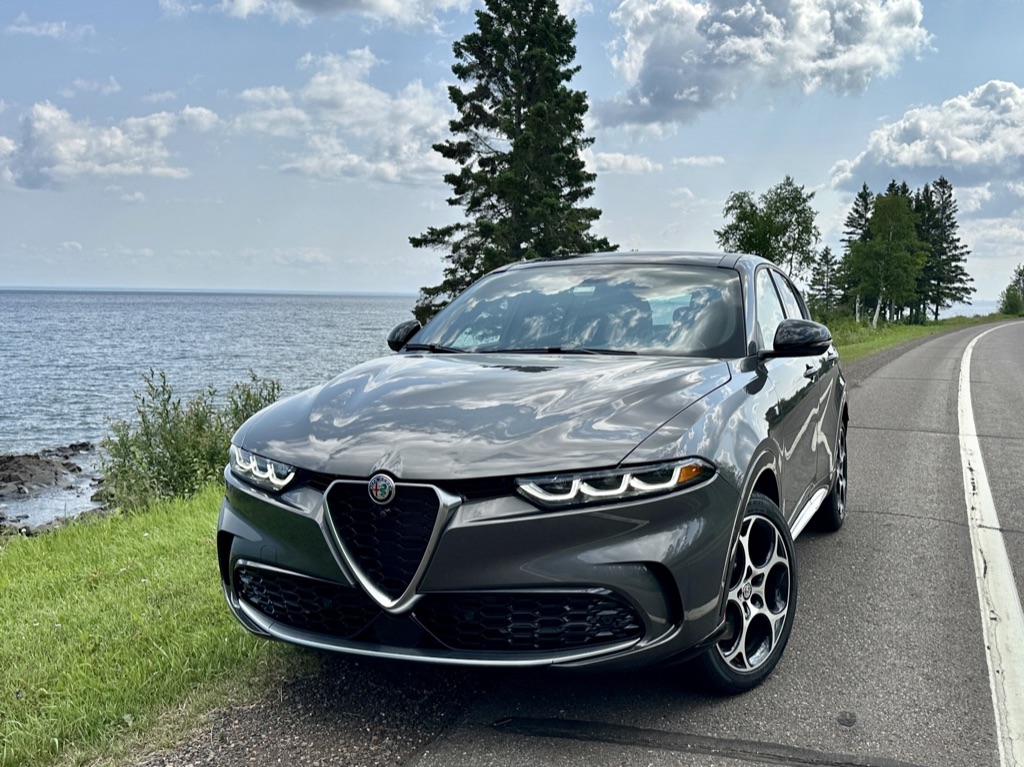


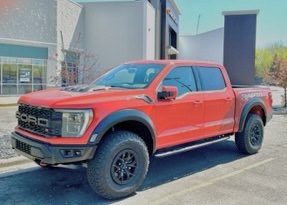

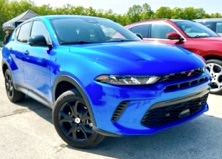


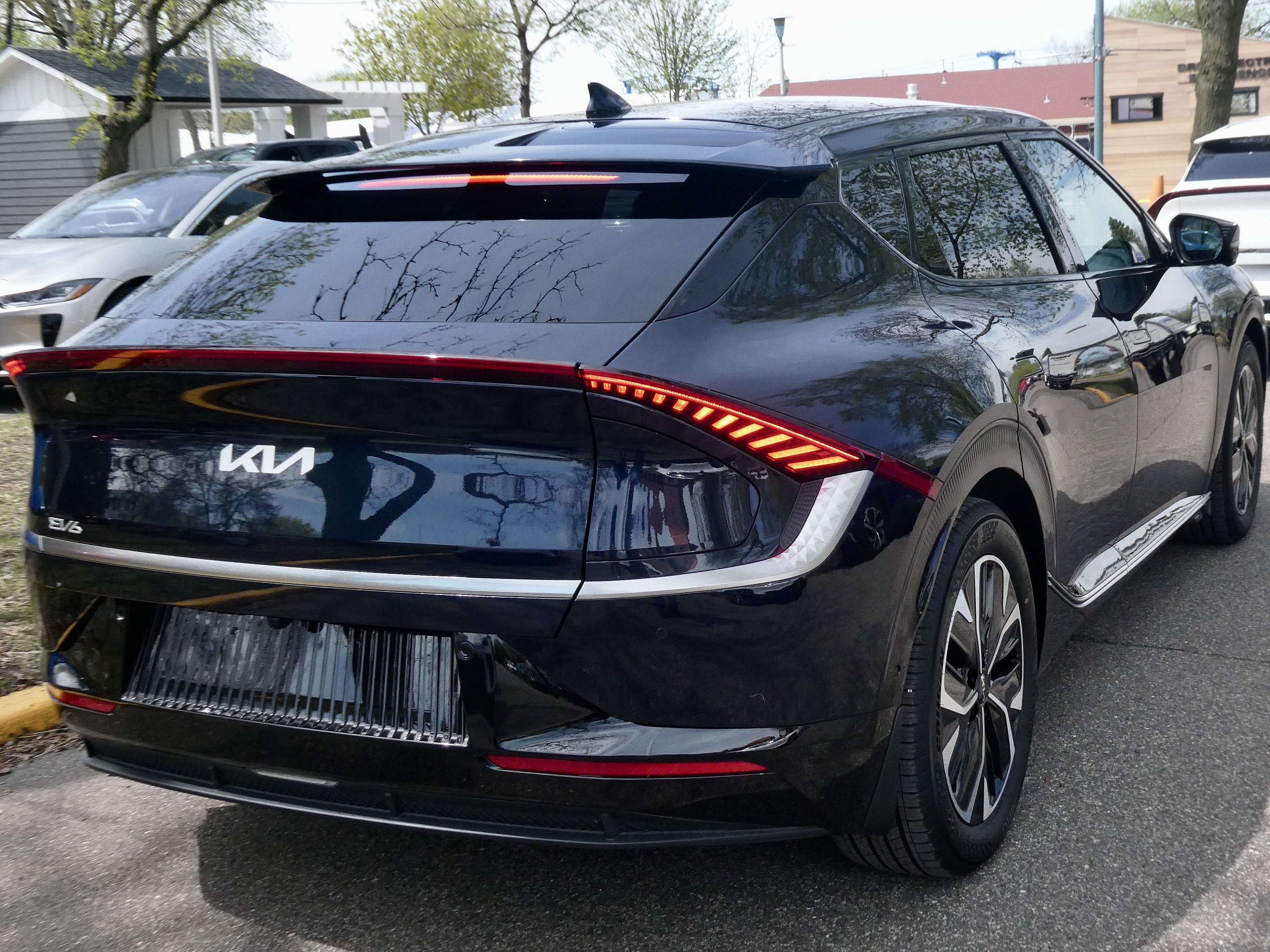
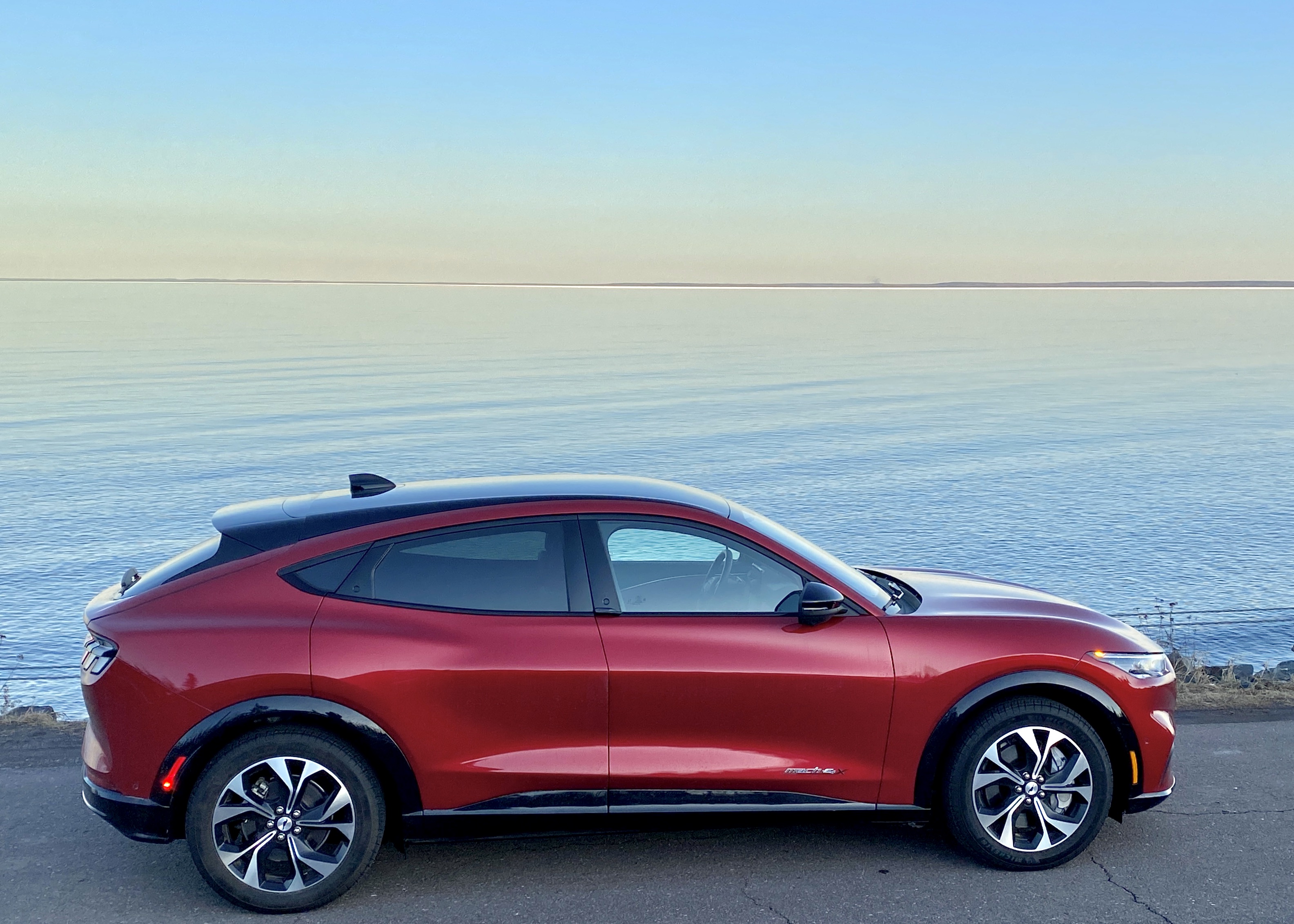
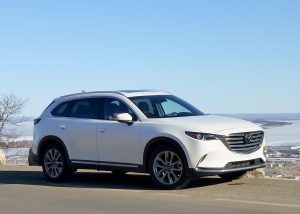
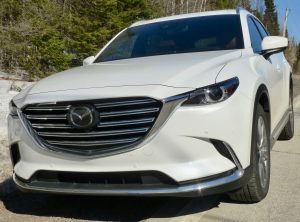
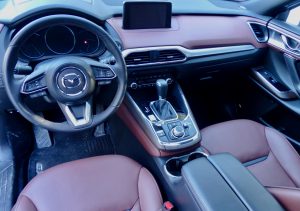

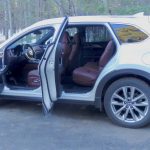
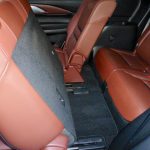
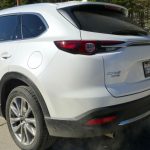
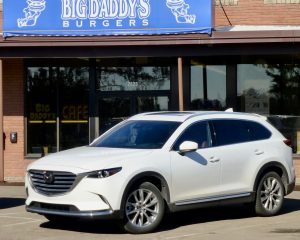
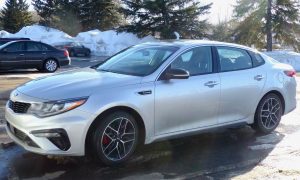
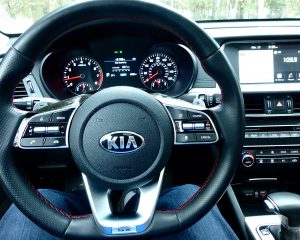


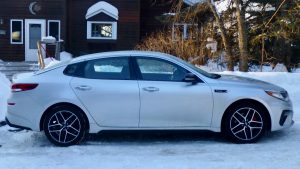
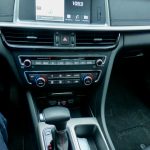
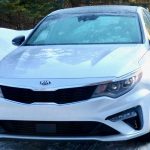
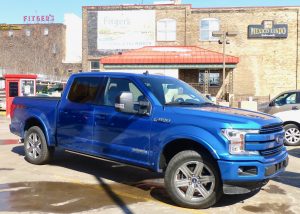
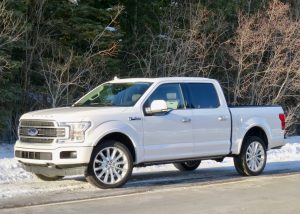
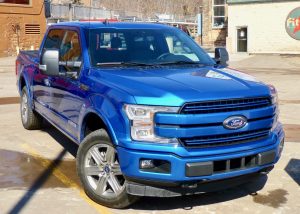
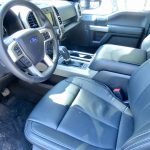
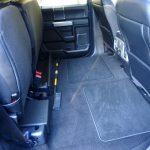
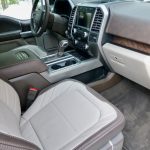
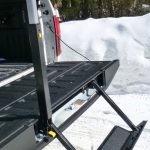
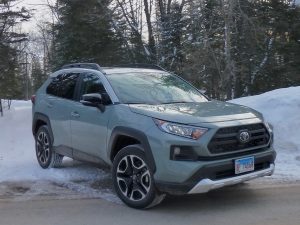
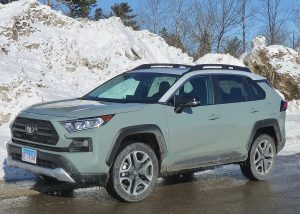

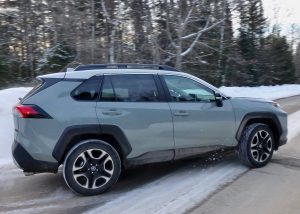

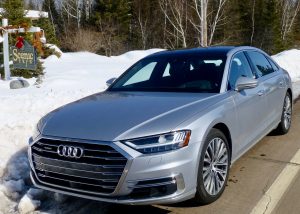
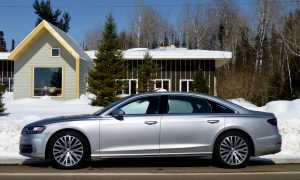
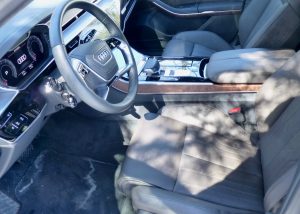
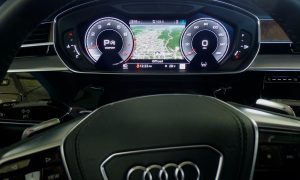
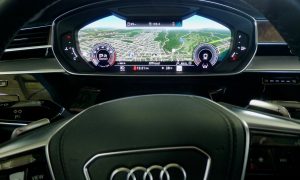
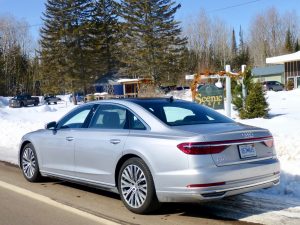
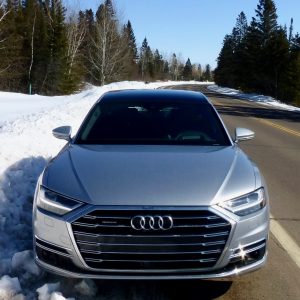
 John Gilbert is a lifetime Minnesotan and career journalist, specializing in cars and sports during and since spending 30 years at the Minneapolis Tribune, now the Star Tribune. More recently, he has continued translating the high-tech world of autos and sharing his passionate insights as a freelance writer/photographer/broadcaster. A member of the prestigious North American Car and Truck of the Year jury since 1993. John can be heard Monday-Friday from 9-11am on 610 KDAL(www.kdal610.com) on the "John Gilbert Show," and writes a column in the Duluth Reader.
John Gilbert is a lifetime Minnesotan and career journalist, specializing in cars and sports during and since spending 30 years at the Minneapolis Tribune, now the Star Tribune. More recently, he has continued translating the high-tech world of autos and sharing his passionate insights as a freelance writer/photographer/broadcaster. A member of the prestigious North American Car and Truck of the Year jury since 1993. John can be heard Monday-Friday from 9-11am on 610 KDAL(www.kdal610.com) on the "John Gilbert Show," and writes a column in the Duluth Reader.